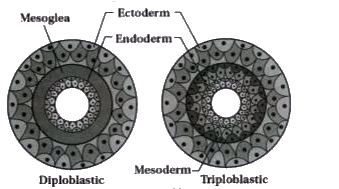Text Solution
Verified by Experts
|
Topper's Solved these Questions
ANIMAL KINGDOM
KUMAR PRAKASHAN|Exercise SECTION - B (DIFFERENCE/SCIENTIFIC REASONS)|16 VideosView PlaylistANIMAL KINGDOM
KUMAR PRAKASHAN|Exercise SECTION - C (DEFINITION/EXPLANATION - TERMS/LOCATION - FUNCTION)|32 VideosView PlaylistANATOMY OF FLOWERING PLANTS
KUMAR PRAKASHAN|Exercise QUESTIONS FROM MODULE (QUESTION PAPER)|10 VideosView PlaylistBIOLOGICAL CLASSIFICATION
KUMAR PRAKASHAN|Exercise OBJECTIVE SECTION (FILL IN THE BLANKS)|10 VideosView Playlist
Similar Questions
Explore conceptually related problems
Knowledge Check
Similar Questions
Explore conceptually related problems
KUMAR PRAKASHAN-ANIMAL KINGDOM-OBJECTIVE SECTION (FILL IN THE BLANKS)
- Describe Diploblastic and Triploblastic organisation in animals.
02:37
|
Playing Now - Teeth are modified ........... which are ........... directed
03:13
|
Play - Air bladder is present which regulates ....... in osteichthyes.
02:52
|
Play - Skin is ............ without gland except the ............. at the bas...
02:46
|
Play - Long Bones in birds are hollow with (pneumatic)
02:36
|
Play - The digestive tract of birds has additional chambers ........... &.......
02:20
|
Play - Snakes and lizards shed their scales as ......
02:50
|
Play - ....... represents ear in Reptilia.
01:43
|
Play - Name aquatic annelida.
02:03
|
Play - Alimentary canal is complete with well developed ............ in Asche...
02:11
|
Play - Pharynx is perforated by ............ in chordates.
02:57
|
Play
